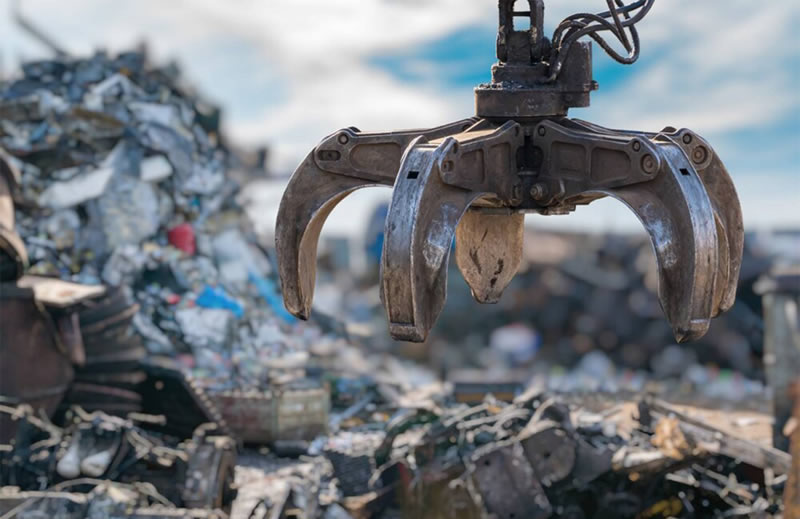

NOV 05, 2025
Selling scrap metal for recycling keeps unwanted materials out of the landfills, earns you a bit of extra cash, and clears out your space. That’s why we encourage homeowners and businesses to sell recyclable items instead of tossing them away like normal trash. Here at RCM Recycling, we pride ourselves on offering competitive prices for both ferrous and non-ferrous metals. In this guide, we’ll look into what happens to metal once it’s been scrapped.
After you sell your scrap, the recycling process begins at a scrap yard or collection facility. Metals are first sorted by type, such as steel, aluminum, copper, brass, and stainless steel, since each one has a different melting point and recycling process. Sorting can be done manually or with machines that use magnets and sensors to identify metals automatically.
For example, magnets separate ferrous metals like iron and steel from non-ferrous metals such as copper and aluminum. This sorting process ensures each type of metal can be recycled efficiently and without contamination.
Once sorted, the metals go through cleaning and processing. This stage removes any non-metal materials such as plastic coatings, rubber, paint, or insulation. For items like electrical wires, specialized equipment strips away the plastic layer to expose the copper or aluminum inside.
Large metal objects are cut down into smaller pieces or shredded. This step makes them easier to melt and speeds up the recycling process. Shredding also helps ensure a more consistent material quality when the metal is melted down later on.
The shredded and cleaned metal is then sent to a furnace designed specifically for that type of metal. Each metal is melted at a carefully controlled temperature. Aluminum melts at around 1,200°F, while copper requires temperatures closer to 2,000°F.
During the melting process, impurities rise to the surface and are skimmed away, ensuring that the final product is pure and ready for reuse. Some recycling facilities also use advanced purification methods, such as electrolysis, to achieve even higher purity levels, especially for valuable metals like copper and aluminum.
Once the metal is purified, it’s poured into molds and cooled into specific shapes. These new metal forms are easier to transport and use in manufacturing. From here, they’re sent to factories where they become raw materials for new products.
Your old copper pipes could be reborn as electrical wiring. Aluminum cans might be transformed into car parts or new beverage containers. Even steel from an old appliance can find new life as part of a bridge, building, or ship.
The best part about scrap metal recycling is that it never truly ends. Metals can be recycled repeatedly without losing their strength or quality. This means the scrap you sell today could still be in circulation decades from now.
By selling your scrap, you’re not just earning cash; you’re helping conserve natural resources, reduce energy use, and cut down on mining waste. Recycling aluminum, for example, uses up to 95% less energy than producing it from raw ore.
If you’re looking for trusted scrap metal buyers, please do not hesitate to contact RCM Recycling. We pride ourselves on being the go-to scrap metal buyers in McDonough with a positive reputation for offering fair prices for recyclable materials. We make scrap metal recycling easy, efficient, and environmentally responsible. Do not let recyclable items take up space in your home and collect dust. Sell your scrap metal to RCM Recycling today.